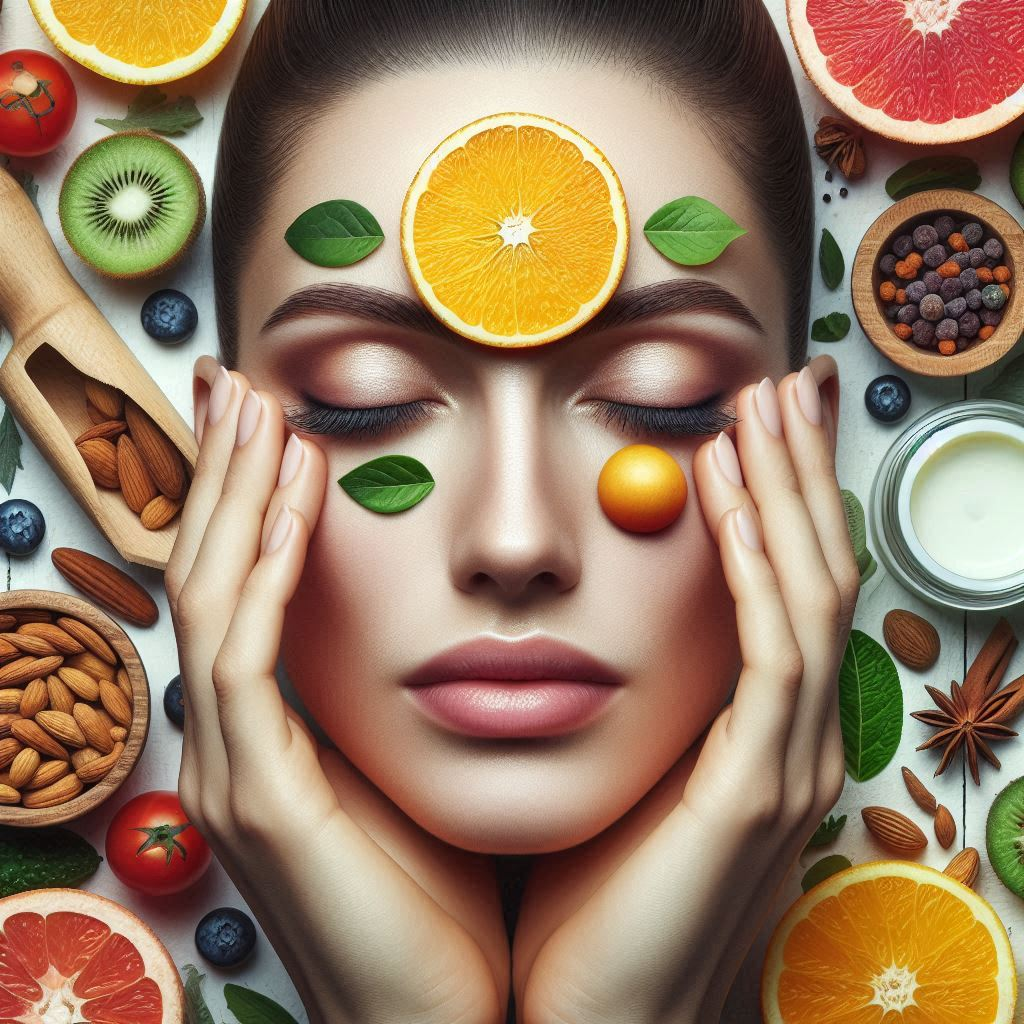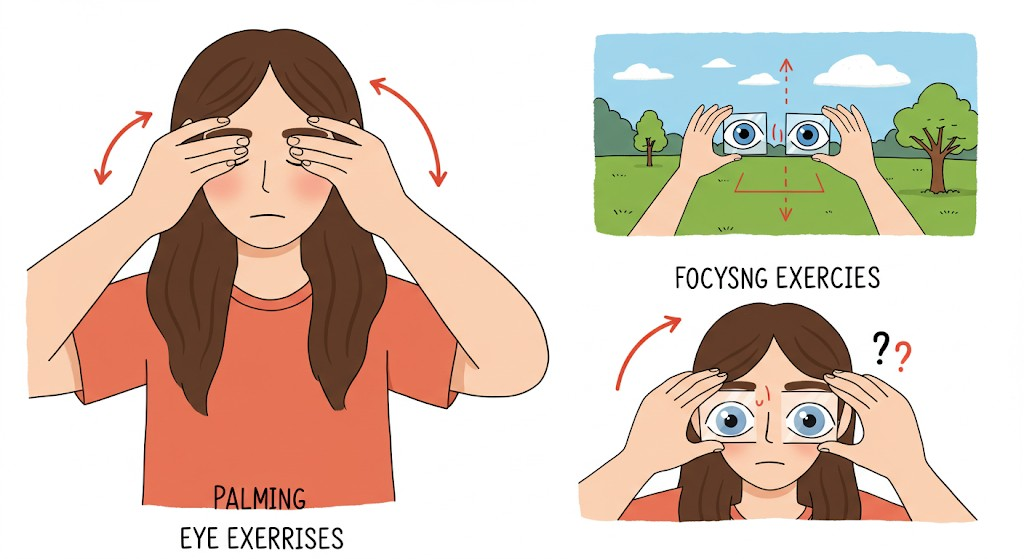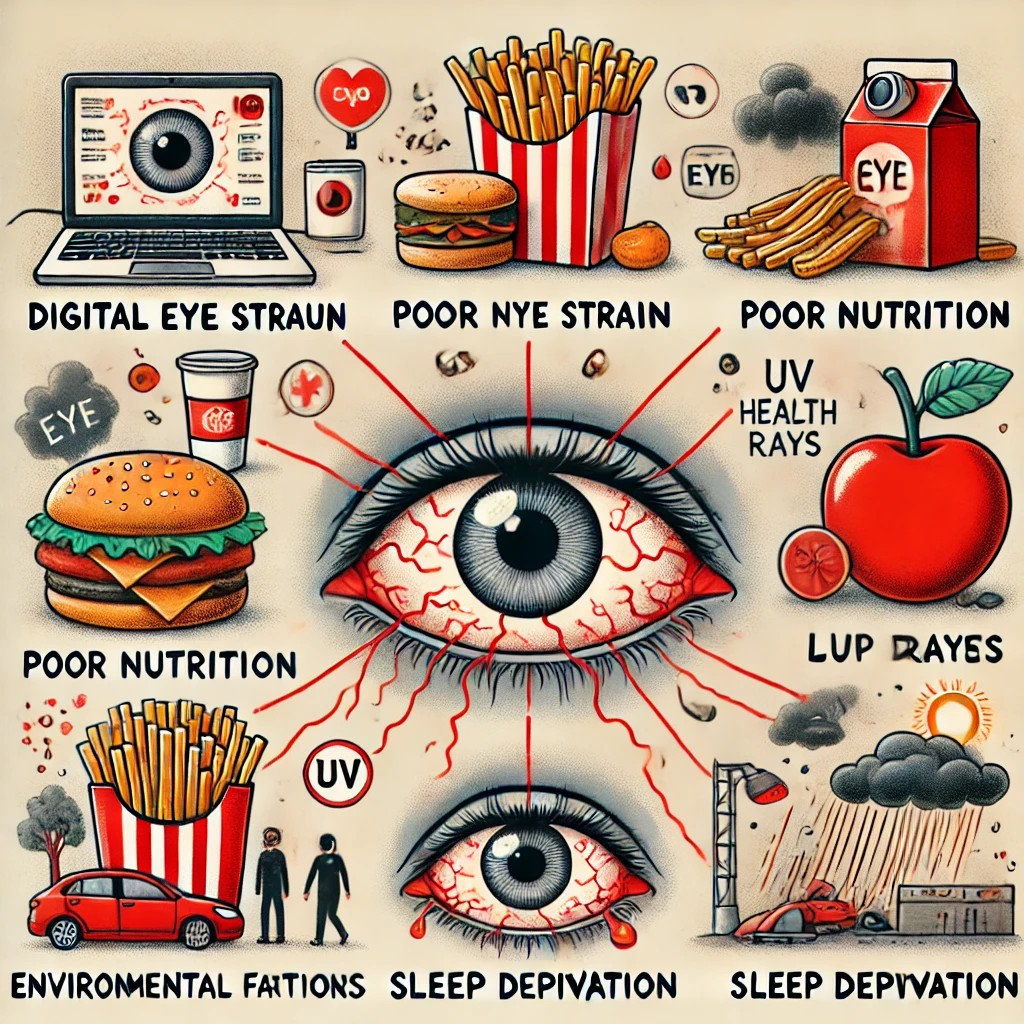
7 Powerful Tips for Healthy Eyes Naturally
Healthy Eyes Naturally: Discover 7 powerful tips for healthy eyes at home to enhance vision, reduce strain, and maintain healthy eyes effortlessly.


Introduction
Brief Introduction to Eye Health
Our eyes serve as windows to the world, enabling us to perceive and interact with our surroundings. However, maintaining good eye health is often overlooked until problems arise. Just like any other part of the body, the eyes need regular care and attention to function optimally. This article delves into natural methods to improve vision, emphasizing the significance of holistic approaches in maintaining eye health.
For healthy eyes, it is essential to focus on practices that promote healthy eyes through diet, exercise, and regular check-ups.
For healthy eyes naturally, it’s essential to incorporate regular eye exercises into your routine.
Including foods rich in omega-3s is vital for maintaining healthy eyes, as these nutrients support the health of your retina and prevent dryness in healthy eyes.
Adopting a diet full of nutrients is crucial for maintaining healthy eyes naturally.
Incorporating holistic practices can also significantly contribute to overall healthy eyes.
Regular eye exercises can also help in maintaining healthy eyes by reducing fatigue and improving focus.
Importance of Natural Methods for Improving Vision
Experiment with various natural remedies to support healthy eyes naturally.
With the increasing prevalence of digital screens and environmental pollutants, eye strain and vision problems have become common issues. While corrective lenses and surgeries are prevalent solutions, they address symptoms rather than underlying causes. Natural methods, on the other hand, aim to enhance overall eye health by addressing root causes. These methods are not only effective but also sustainable, minimizing the risk of potential side effects associated with medical interventions.
Engaging in regular check-ups ensures that any potential issues related to healthy eyes are caught early.
Overview of the Article’s Content
This article is structured to provide comprehensive insights into eye health and natural vision improvement. It begins with an understanding of vision and eye health, covering the anatomy of the eye, common vision problems, and the role of lifestyle and diet. The core of the article presents seven powerful tips for naturally maintaining and enhancing eye health. Additionally, it explores holistic approaches, debunks common myths, and concludes with practical advice and resources.

Section 1: Understanding Vision and Eye Health
Anatomy of the Eye
The human eye is a complex organ that captures light and converts it into neural signals, which the brain interprets as visual images. Key components include:
- Cornea: The clear, dome-shaped surface that covers the front of the eye.
- Pupil: The black circular opening in the center of the eye that regulates the amount of light entering.
- Lens: A transparent structure that focuses light onto the retina.
- Retina: A layer of light-sensitive cells that convert light into electrical signals.
- Optic Nerve: Transmits visual information from the retina to the brain.
Understanding these parts helps in recognizing how various factors can impact vision.
Common Vision Problems and Their Causes
Several common vision problems can affect eye health:
- Myopia (Nearsightedness): Difficulty seeing distant objects clearly, often caused by the eye being too long or the cornea too curved.
- Hyperopia (farsightedness): Difficulty seeing close objects clearly due to the eye being too short or the cornea being too flat.
- Astigmatism: Blurred vision caused by an irregularly shaped cornea or lens.
- Presbyopia: Age-related difficulty in focusing on close objects due to the lens losing flexibility.
Practicing holistic methods is an effective way to achieve healthy eyes naturally.
Factors contributing to these issues include genetics, aging, prolonged screen time, poor diet, and lack of eye exercises.
The Role of Lifestyle and Diet in Eye Health
A healthy lifestyle and balanced diet play crucial roles in maintaining good eye health:
- Nutrition: Consuming foods rich in vitamins A, C, and E, and omega-3 fatty acids supports eye health. These nutrients help protect against conditions like macular degeneration and cataracts.
- Hydration: Staying hydrated ensures that the eyes produce enough tears to keep them moist and comfortable.
- Exercise: Regular physical activity improves blood circulation, ensuring that the eyes receive adequate oxygen and nutrients.
- Sleep: Adequate sleep is essential for eye health, as it allows the eyes to rest and repair.
- Screen Time Management: Limiting screen time and taking regular breaks can reduce eye strain and prevent digital eye strain.
Section 2: 7 Powerful Tips for Healthy Eyes Naturally
Tip 1: Eye-Friendly Diet
Importance of Nutrients Like Vitamins A, C, and E, and Omega-3 Fatty Acids
Eating a diet rich in essential nutrients plays a crucial role in maintaining good eye health. Vitamins A, C, and E, along with omega-3 fatty acids, are particularly beneficial for the eyes. Vitamin A helps maintain the health of the cornea (the clear front cover of the eye), vitamin C supports blood vessels in the eyes and may reduce the risk of cataracts, and vitamin E is an antioxidant that helps protect the eyes from damage caused by free radicals. Omega-3 fatty acids, found in high amounts in fish oil, are essential for maintaining the health of the retina and reducing the risk of dry eyes.
List of Foods Rich in These Nutrients
- Vitamin A: Carrots, sweet potatoes, kale, spinach, and bell peppers.
- Vitamin C: Oranges, strawberries, kiwi, bell peppers, and broccoli.
- Vitamin E: Almonds, sunflower seeds, avocados, and spinach.
- Omega-3 Fatty Acids: Salmon, mackerel, chia seeds, flaxseeds, and walnuts.
Simple Meal Ideas and Recipes
- Breakfast: Smoothie with spinach, kale, carrots, orange juice, and chia seeds.
- Lunch: Salad with mixed greens (spinach, kale), bell peppers, strawberries, avocado, and a sprinkle of sunflower seeds.
- Dinner: Grilled salmon with a side of sweet potato fries and steamed broccoli.
- Snacks: carrot sticks with hummus or a handful of almonds and walnuts.
Tip 2: Regular Eye Exercises
Regular eye exercises can help reduce eye strain, improve focus and concentration, and maintain good vision. They promote flexibility and strength in the eye muscles, which can enhance overall eye health.
Diet plays a crucial role in sustaining healthy eyes. A balanced intake of vitamins A, C, and E is vital for maintaining healthy eyes.
In addition to these tips, taking regular breaks from screens supports healthy eyes and reduces strain.
Healthy eyes naturally require a balanced lifestyle, including hydration and good nutrition.
To maintain healthy eyes naturally, ensure you protect your eyes from UV rays with proper eyewear.
Step-by-Step Guide to Simple Exercises Like Palming, Blinking, and Focusing
- Palming:
- Sit comfortably and rub your palms together to generate heat.
- Place your warm palms over your closed eyes without applying pressure.
- Relax and breathe deeply for a few minutes.
- Blinking:
- Sit comfortably and keep your eyes open.
- Blink every 3-4 seconds for about 2 minutes.
- This helps lubricate your eyes and reduces dryness.
- Focusing:
- Hold a pen or your thumb at arm’s length and focus on it.
- Slowly move the pen or thumb closer to your nose while maintaining focus.
- Return it to an arm’s length and continue the exercise for several minutes.
Tips for Incorporating Exercises into Daily Routine
- Set reminders to take short breaks every hour to perform these exercises, especially if you work on a computer.
- Combine eye exercises with relaxation techniques like deep breathing for added benefits.
- Make it a habit to do these exercises in the morning and before bedtime.
Tip 3: Proper Lighting and Screen Time Management
Impact of Lighting on Eye Health
Proper lighting is essential to reduce eye strain and fatigue. Poor lighting, whether too dim or too bright, can cause discomfort and lead to long-term vision problems.
Best Practices for Reducing Eye Strain from Screens
- Ensure your workspace is well-lit with soft, indirect lighting.
- Adjust the brightness and contrast of your screen to match your surroundings.
- Use an anti-glare screen protector if necessary.
- Position your screen at eye level and about 20-24 inches away from your eyes.
Recommended Screen Time Limits and Breaks
- Follow the 20-20-20 rule: Every 20 minutes, look at something 20 feet away for at least 20 seconds.
- Limit screen time to no more than 2 hours at a stretch, with breaks in between.
- Take longer breaks (10-15 minutes) every couple of hours to rest your eyes.
Tip 4: Hydration and Eye Moisture
Importance of Staying Hydrated for Eye Health
Staying hydrated is vital for overall health, including eye health. Adequate hydration ensures that your eyes produce enough tears, which keep them moist and comfortable.
Incorporating regular sleep patterns is crucial for healthy eyes naturally.
Tips for Maintaining Eye Moisture
- Drink at least 8 glasses of water a day.
- Use a humidifier in dry environments to maintain moisture in the air.
- Avoid prolonged exposure to dry or windy conditions without eye protection.
Natural Remedies for Dry Eyes
- Warm Compresses: Apply a warm, damp cloth to your closed eyes for a few minutes to stimulate tear production.
- Cucumber Slices: Place cool cucumber slices over your closed eyes to soothe and hydrate.
- Aloe Vera Gel: Apply a small amount of pure aloe vera gel around the eyes (avoid direct contact with the eyes) to moisturize the skin and reduce dryness.
Section 2: 7 Powerful Tips for Healthy Eyes Naturally
Tip 5: Protecting Eyes from Harmful UV Rays
Effects of UV Rays on Eyes
Exposure to ultraviolet (UV) rays from the sun can have several harmful effects on the eyes. Prolonged exposure can increase the risk of cataracts, which cloud the lens and impair vision. UV rays can also contribute to macular degeneration, a leading cause of vision loss in older adults. Additionally, excessive UV exposure can cause photokeratitis, a painful condition similar to a sunburn on the cornea. Therefore, it’s crucial to take steps to protect your eyes from these harmful rays.
Choosing the Right Sunglasses
When selecting sunglasses, it’s important to choose a pair that offers 100% UV protection. Look for labels that say “UV400,” which means the sunglasses block both UVA and UVB rays. Polarized lenses are also beneficial as they reduce glare, especially useful for activities like driving or being near water. Wraparound styles can provide additional protection by blocking sunlight from the sides. Remember, sunglasses are not just a fashion accessory—they are a vital tool for protecting your eye health.
Other Protective Measures for Outdoor Activities
- Hats: Wearing a wide-brimmed hat can provide extra shade and reduce the amount of UV exposure to your eyes.
- Seek Shade: Whenever possible, stay in the shade, especially during peak sunlight hours (10 a.m. to 4 p.m.).
- Avoid Tanning Beds: These emit UV rays that can be just as harmful to your eyes as natural sunlight.
- Special Eyewear for Sports: If you’re involved in outdoor sports, consider wearing specialized protective eyewear that offers UV protection.
Tip 6: Adequate Sleep and Eye Rest
Connection Between Sleep and Eye Health
Adequate sleep is essential for overall health, including eye health. During sleep, the eyes undergo a period of rest and repair, which is crucial for maintaining good vision. Lack of sleep can lead to eye strain, dryness, and discomfort. Chronic sleep deprivation can also contribute to more serious eye conditions like glaucoma.
Tips for Improving Sleep Quality
- Establish a Routine: Go to bed and wake up at the same time every day, even on weekends.
- Create a Sleep-Conducive Environment: Make sure your bedroom is dark, quiet, and cool.
- Limit Screen Time: Avoid screens for at least an hour before bedtime to reduce blue light exposure.
- Practice Relaxation Techniques: Consider activities like reading, meditation, or deep breathing exercises to relax before bed.
Importance of Eye Rest During the Day
- Take Breaks: Follow the 20-20-20 rule—every 20 minutes, look at something 20 feet away for at least 20 seconds.
- Adjust Workstations: Ensure your screen is at eye level and at a comfortable distance to reduce strain.
- Blink Often: Make a conscious effort to blink regularly, especially when using digital devices, to keep your eyes moist.
Tip 7: Regular Eye Check-Ups
Importance of Routine Eye Exams
Regular eye exams are crucial for detecting vision problems early and maintaining overall eye health. Comprehensive eye exams can reveal issues like glaucoma, cataracts, macular degeneration, and other conditions that may not have obvious symptoms in their early stages. Early detection and treatment can prevent vision loss and ensure your eyes stay healthy.
What to Expect During an Eye Check-Up
Practicing good hygiene around your eyes is also crucial for maintaining healthy eyes.
- Visual Acuity Test: Measures how well you see at various distances.
- Refraction Test: Determines the prescription for corrective lenses.
- Eye Pressure Test: Checks for signs of glaucoma.
- Slit-Lamp Exam: Allows the doctor to examine the structures of your eye in detail.
- Dilation: Involves using eye drops to widen your pupils so the doctor can get a better view of the retina and optic nerve.
Tips for Finding a Good Eye Care Professional
- Credentials: Ensure the professional is certified and licensed.
- Specializations: Consider whether the professional specializes in areas relevant to your needs (e.g., pediatric optometry, geriatrics).
- Reviews and Recommendations: Look for positive reviews online or ask for recommendations from friends and family.
- Location and Convenience: Choose a clinic that is conveniently located and has office hours that fit your schedule.
Section 3: Holistic Approaches to Vision Improvement
Introduction to Holistic Practices (Yoga, Meditation, Acupuncture)
Holistic practices focus on treating the whole person rather than just addressing specific symptoms. When it comes to eye health, holistic approaches like yoga, meditation, and acupuncture can play a significant role. These practices aim to improve overall well-being, which in turn positively impacts eye health.
Yoga includes specific exercises and poses that enhance blood flow to the eyes and reduce strain. Poses like the “Palming Pose” and “Eye Rotations” are particularly beneficial.
Meditation helps reduce stress and promotes relaxation. By calming the mind and reducing mental strain, meditation can alleviate eye strain and improve focus.
Acupuncture involves inserting thin needles into specific points on the body to stimulate energy flow. This ancient practice can address underlying health issues that affect vision and eye health.
Benefits of Reducing Stress and Improving Overall Wellness
Reducing stress is crucial for maintaining good eye health. Chronic stress can lead to increased pressure in the eyes, which is a risk factor for glaucoma. Additionally, stress often results in poor sleep, which affects eye health and overall well-being.
Improving overall wellness through holistic practices helps:
- Enhance Blood Circulation: Better blood flow ensures that the eyes receive necessary nutrients and oxygen.
- Reduce Inflammation: Holistic practices can help reduce inflammation in the body, including the eyes.
- Boost Immune System: A strong immune system can protect the eyes from infections and diseases.
Personal Testimonials and Success Stories
Many individuals have experienced significant improvements in their vision and overall eye health through holistic practices. Here are a few success stories:
- Sarah’s Story: Sarah struggled with chronic dry eyes and eye strain due to prolonged screen time. After incorporating yoga and meditation into her daily routine, she noticed a considerable reduction in eye strain and dryness. She now practices the “Palming Pose” and meditates for 10 minutes every morning.
- John’s Journey: John had early signs of glaucoma and was concerned about his vision. He began acupuncture sessions twice a week, focusing on points related to eye health. After a few months, his eye pressure stabilized, and his vision improved. He continues to use acupuncture as part of his holistic approach to eye health.
Section 4: Common Myths and Misconceptions
Debunking Myths About Eye Health and Natural Vision Improvement
Myth 1: “Carrots are the only food that can improve your vision.” While carrots are rich in vitamin A, which is essential for eye health, many other foods, such as leafy greens and fish, also provide crucial nutrients for maintaining good vision.
Myth 2: “Wearing glasses will make your vision worse.” Wearing glasses does not weaken your vision. On the contrary, glasses help you see more clearly and reduce eye strain.
Myth 3: “There’s nothing you can do to prevent vision loss as you age.” Maintaining a healthy lifestyle, including a balanced diet, regular exercise, and routine eye check-ups, can significantly reduce the risk of age-related vision problems.
Myth 4: “Eye exercises can cure all vision problems.” Although eye exercises can enhance eye health and alleviate strain, they are not a panacea for vision problems. It’s essential to consult with an eye care professional for comprehensive care.
Providing Evidence-Based Information
- Nutrition and Eye Health: Numerous studies have shown that a diet rich in vitamins and omega-3 fatty acids can help prevent age-related macular degeneration (AMD) and cataracts.
- Effectiveness of Yoga and Meditation: Research indicates that yoga and meditation can reduce intraocular pressure, a significant risk factor for glaucoma.
- Acupuncture Benefits: Clinical trials suggest that acupuncture can improve blood flow to the eyes and reduce symptoms of dry eyes and other eye conditions.
Section 5: Conclusion
Recap of the Main Points
Maintaining healthy eyes naturally involves a combination of a nutritious diet, regular eye exercises, proper screen time management, hydration, protection from UV rays, adequate sleep, and routine eye check-ups. Incorporating holistic practices such as yoga, meditation, and acupuncture can further enhance eye health by reducing stress and improving overall wellness.
Encouragement to Incorporate Tips into Daily Life
Taking small steps to incorporate these tips into your daily routine can have a significant impact on your eye health. Whether it’s adding eye-friendly foods to your diet, practicing eye exercises, or adopting holistic practices, each effort contributes to maintaining good vision and preventing eye problems.
Final Thoughts on Maintaining Healthy Eyes Naturally
Protecting your eyes from harmful UV rays is also essential for maintaining healthy eyes during outdoor activities.
Your eyes are an integral part of your overall health and well-being. By adopting natural and holistic approaches to eye care, you can enhance your vision and protect your eyes from potential issues. Remember, consistency is key. Make these practices a regular part of your life, and you’ll likely see long-term benefits for your eye health.
Section 6: FAQs
Answering Common Questions About Eye Health and Natural Vision Improvement
- Can eye exercises really improve my vision? Eye exercises can help reduce eye strain, improve focus, and enhance overall eye health. However, they are not a panacea for vision problems. It’s essential to consult with an eye care professional for comprehensive care.
- What foods are best for eye health? Foods rich in vitamins A, C, and E, and omega-3 fatty acids are beneficial for eye health. Examples include carrots, sweet potatoes, leafy greens, citrus fruits, and fish.
- How often should I get my eyes checked? It’s recommended to have a comprehensive eye exam every 1-2 years, depending on your age, risk factors, and any existing eye conditions.
- Can using digital devices harm my eyes? Prolonged use of digital devices can cause digital eye strain, leading to discomfort, dryness, and fatigue. Following the 20-20-20 rule and taking regular breaks can help reduce these effects.
- Are natural remedies effective for dry eyes? Natural remedies such as warm compresses, cucumber slices, and aloe vera gel can provide relief for dry eyes. However, it’s essential to identify and address the underlying cause with the help of an eye care professional.
- Do sunglasses really protect my eyes from UV rays? Yes, sunglasses with 100% UV protection can shield your eyes from harmful UV rays, reducing the risk of cataracts, macular degeneration, and other eye conditions.
- Can stress affect my eye health? Chronic stress can lead to increased eye pressure and other vision problems. Practices like yoga, meditation, and adequate sleep can help reduce stress and promote eye health.
- Is it possible to improve vision without glasses or surgery? While glasses and surgery are effective solutions for vision problems, adopting a healthy lifestyle, a proper diet, and regular eye exercises can help maintain and potentially improve vision naturally.
- How much screen time is too much for my eyes? It’s advisable to limit screen time to no more than 2 hours at a stretch and take regular breaks to reduce eye strain. Following the 20-20-20 rule can also help mitigate the effects of prolonged screen use.
- What are the signs that I need to see an eye doctor? Signs include frequent headaches, difficulty focusing, blurry vision, eye pain, and excessive tearing or dryness. If you experience any of these symptoms, it’s essential to consult an eye care professional.
Section 7: Additional Resources
List of Recommended Books and Websites.
Books:
- “The Eye Care Revolution” by Robert Abel Jr.
- “Better Eyesight Without Glasses” by William H. Bates
- “Natural Eye Care: Your Guide to Healthy Vision and Healing” by Marc Grossman and Michael Edson
- “Relearning to See: Improve Your Eyesight Naturally!” by Thomas R. Quackenbush
- “The New Optometrist: A Complete Guide to Vision Care” by Jeffrey Anshel
Websites:
- American Academy of Ophthalmology (AAO): www.aao.org
- National Eye Institute (NEI): www.nei.nih.gov
- Mayo Clinic – Eye Health: www.mayoclinic.org
- All About Vision: www.allaboutvision.com
- MindfulLivingGuide.com: Mindful Living Guide
Adequate sleep and hydration contribute significantly to healthy eyes, allowing for proper recovery and moisture.
Including regular breaks during screen time will help keep your eyes healthy.
Healthy eyes also require mindfulness around symptoms that indicate a visit to the eye care professional.


